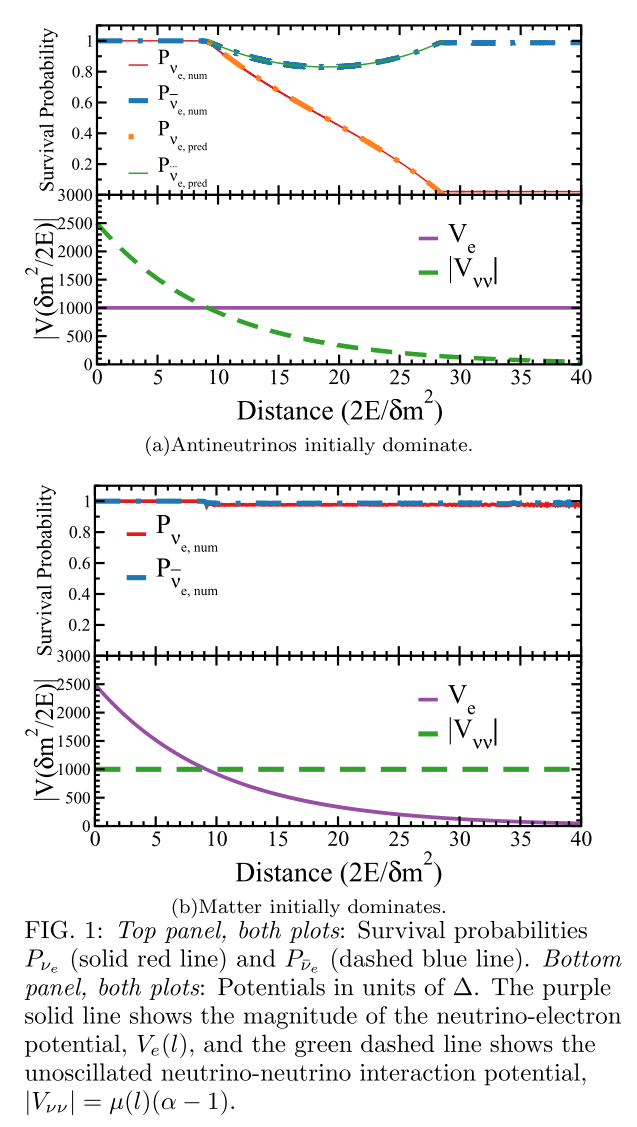11.4. Matter Neutrino Resonance¶
[Malkus2014] proposed the matter-neutrino-resonance (MNR) transition. They considered a two flavors senario of single energy with both neutrinos and antineutrinos.
They have a system with single energy two flavor neutrinos. The equation of motion contains vacuum term, matter term, and self-interaction term. The matter density drops along z direction so the matter potential could drop. Similarly for neutrino self-interaction term. The key to realize a possible resonance is the fact that the two potentials can have different signes, which indicates that they could cancel each other at some condition.
In this work Malkus et al tested on two simple cases. The first one is to decrease neutrino self-interaction potential while keeping matter potential constant. Initally neutrino self-interaction dominates. When the two potential becomes the same order but with different signs, the electron neutrinos are transformed to other flavors. But the anti-neutrino doesn’t change that much.
The second case they checked is to keep neutrino self-interaction constant but decrease matter potential strength.

Fig. 11.1 Electron neutrinos are suppressed [Malkus2014]. This is different from MSW effect.¶
This is named Neutrino-Matter Resonance, NMR for short. [Wu2016] explained this phenomenon using extended adiabatic MSW solutions to the system. The idea is that the flavor isospin will remain aligned to Hamitlonian if the matter potential and neutrino self-interaction potential are varying slowly and the flavor isospin initially aligned with Hamiltonian in flavor isospin picture.
In the first case of [Malkus2014], the flavor isospin is initially aligned Hamiltonian because the self-interaction dominates. Just like solar potential the potential [Malkus2014] uses is decreasing exponentially. We can still consider it as slow variation. When neutrino self-interaction becomes comparable with matter potential, the Hamiltonian vector starts to change direction. In the limit that the matter potential dominates, the flavor isospin will be pointing downwards, which means a larger conversion of flavors.
11.4.1. References and Notes¶
- Malkus2014(1,2,3)
Malkus, a, Friedland, A., & McLaughlin, G. C. (2014). Matter-Neutrino Resonance Above Merging Compact Objects, (1), 1–6.
- Wu2016
Wu, M.-R., Duan, H., & Qian, Y.-Z. (2016). Physics of neutrino flavor transformation through matter–neutrino resonances. Physics Letters B, 752, 89–94.